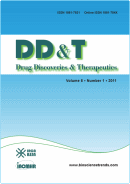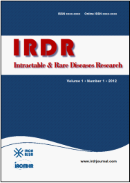Drug Discov Ther. 2025;19(3):160-173. (DOI: 10.5582/ddt.2025.01043)
Abortion adverse events associated with adalimumab, etanercept, ustekinumab, and dupilumab during pregnancy: A pharmacovigilance study based on FDA adverse event reporting system
Liu Q, Wang Y, Hu PW, He PZ
Biologics are essential for managing immune-related inflammatory diseases during pregnancy to prevent disease progression and adverse pregnancy outcomes. However, data on the safety of biologics in a broader population are limited. This study aims to evaluate abortion-related adverse events (AEs) associated with adalimumab, etanercept, ustekinumab, and dupilumab, using data from the FDA Adverse Event Reporting System (FAERS) database. A disproportionality analysis was performed using the Reporting Odds Ratio (ROR) and Bayesian Confidence Propagation Neural Network (BCPNN) to identify signals of abortion-related AEs. The time-to-onset profiles were assessed by analyzing the description and Weibull shape parameters (WSPs) for these events. Sensitivity analyses were also conducted, including drug–drug interaction studies, logistic regression, and a similar retrospective analysis using data from the Japanese Adverse Drug Event Report (JADER) database. Disproportionality analysis revealed specific signals for abortion-related AEs associated with adalimumab, etanercept, and ustekinumab. The drug–drug interaction analysis indicated that these biologics, particularly without methotrexate or prednisolone, increase the risk of abortionrelated AEs. Logistic regression identified several factors influencing outcomes. The time-to-onset analysis revealed that dupilumab had an earlier onset of 62.5 days, while etanercept had a later onset at 184 days. WSPs analysis revealed that signals for adalimumab, ustekinumab, and dupilumab exhibited early failure-type features, indicating a decreasing risk of abortion-related AEs over time. In conclusion, adalimumab, etanercept, and ustekinumab are associated with an increased risk of abortion-related adverse pregnancy outcomes, though the signals remain relatively weak. Further large-scale studies are needed to provide more definitive evidence.







